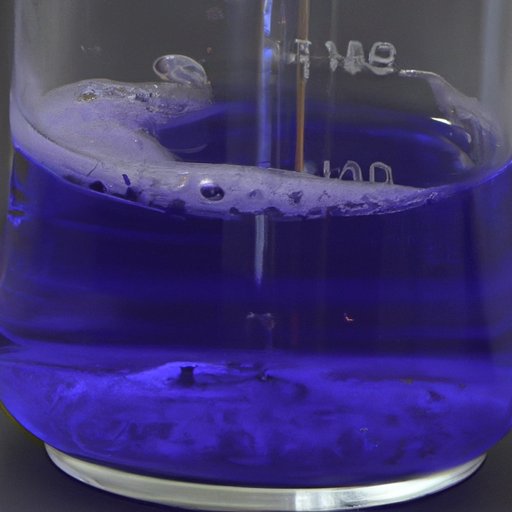Introduction
Mixtures are a key concept in science that is used to combine two or more substances together. A mixture is a combination of two or more different materials that can be separated by physical means. This type of combination is different from a chemical reaction, which involves a permanent change in the composition of each substance. Knowing how to identify and work with mixtures is an important skill for scientists, as it allows them to create solutions and conduct experiments.
Exploring the Basics of Mixtures in Science
In order to understand mixtures in science, it is important to know the basics of what they are and how they work. A mixture is simply a combination of two or more substances that are physically combined, but not chemically bonded. The components of a mixture are called components, and they can be solid, liquid, or gaseous in nature. For example, air is a mixture of oxygen, nitrogen, and other gases.
The benefits of working with mixtures in science are numerous. For one, mixtures allow scientists to create solutions, or homogenous mixtures, which are combinations of two or more substances that are evenly distributed throughout the mixture. This makes it easier to measure and experiment with the solution. Additionally, mixtures can be separated using physical methods like filtration or evaporation, enabling scientists to analyze the components of a mixture.

Investigating Different Types of Mixtures in Science
Mixtures can be divided into two main categories: homogeneous and heterogeneous. Homogeneous mixtures are those in which all components are evenly distributed throughout the mixture. Examples of homogeneous mixtures include air, salt water, and sugar water. Heterogeneous mixtures, on the other hand, are those in which the components are not evenly distributed throughout the mixture. Examples of heterogeneous mixtures include soil and oil and vinegar.
Understanding How Mixtures are Used in Scientific Experiments
Mixtures have many uses in scientific experiments. For example, mixtures can be used to create solutions, which are homogeneous mixtures that are used to test reactions and measure concentrations. Additionally, mixtures can be separated using physical methods such as filtration or distillation, allowing scientists to analyze the components of a mixture. Finally, mixtures can be used to test reactions, as different mixtures can result in different chemical reactions.

Examining Common Examples of Mixtures in Science
There are many common examples of mixtures in science. Air is a mixture of oxygen, nitrogen, and other gases that can be separated using physical methods like distillation. Soil is a heterogeneous mixture of organic and inorganic matter, while water is a homogeneous mixture of hydrogen and oxygen molecules. All three of these mixtures play an important role in our environment and understanding how they work is essential for scientists.
Comparing and Contrasting Homogeneous and Heterogeneous Mixtures in Science
Homogeneous and heterogeneous mixtures have some similarities and differences. Both types of mixtures involve two or more substances that are physically combined, but not chemically bonded. However, homogeneous mixtures are composed of components that are evenly distributed throughout the mixture, while heterogeneous mixtures are composed of components that are not evenly distributed.

Analyzing the Properties of Mixtures in Science
Mixtures have several properties that can be analyzed in scientific experiments. These properties include viscosity, solubility, and flammability. Viscosity is the measure of a mixture’s resistance to flow, while solubility measures how easily a substance dissolves in a solvent. Flammability measures a mixture’s ability to burn.

Investigating the Role of Mixtures in Chemical Reactions
Mixtures also play an important role in chemical reactions. In order for a chemical reaction to take place, the reactants must be combined in the correct proportions. Additionally, catalysts, or agents that speed up the rate of a chemical reaction, can be added to mixtures in order to increase the efficiency of the reaction. Finally, the products of a reaction are determined by the reactants that are present in the mixture.
Conclusion
In conclusion, mixtures are an important concept in science that can be used to combine two or more substances together. Mixtures can be divided into two main categories: homogeneous and heterogeneous. Homogeneous mixtures are composed of components that are evenly distributed throughout the mixture, while heterogeneous mixtures are composed of components that are not evenly distributed. Mixtures have several properties that can be analyzed, including viscosity, solubility, and flammability. Additionally, mixtures play an important role in chemical reactions, as they provide the reactants necessary for a reaction to take place. Understanding mixtures in science is essential for scientists, as it enables them to create solutions, separate mixtures, and test reactions.
(Note: Is this article not meeting your expectations? Do you have knowledge or insights to share? Unlock new opportunities and expand your reach by joining our authors team. Click Registration to join us and share your expertise with our readers.)
